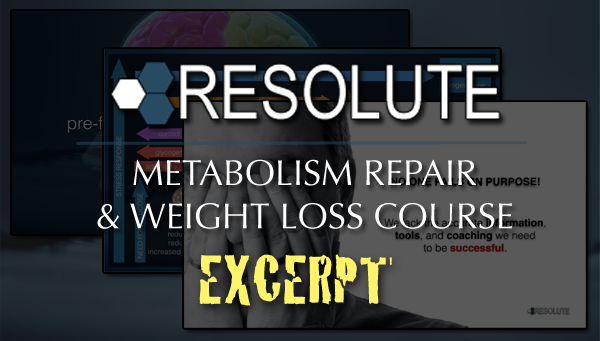Before we get started with breath and respiration, we’ll take a minute to discuss the diaphragm. The diaphragm is a dome shaped muscle between the thoracic cavity and the abdominal cavity.
When the diaphragm contracts air is pulled into the lungs. This is important because the lungs themselves do not exert any effort in the breath cycle. When the diaphragm relaxes the breathe is naturally expelled meaning there is no muscular tension necessary to naturally exhale.
It is worth noting here that western lifestyle habits contribute to very bad posture for a lot of people. It is worth the time to sit up straight with good posture. Since people are constantly hunched forward and flexing at the abdomen it is more difficult for the diaphragm to inhale without the use of auxiliary breathing muscles.
When a person is breathing through the use of auxiliary breathing muscles such as in the neck and chest it is inefficient and a sign of stress. This is undesirable for several reasons. First it exhausts these muscles which produces stress, and inflammation. Second it increases the likelihood of hyperventilation.
So, physiological respiration is the exchange of gases through the act of breathing. The lungs contain millions of alveoli that transfer gases between the lungs and blood.
Generally, people understand this to be the inhalation of oxygen and the exhalation of carbon dioxide. But of course there is more to it than that.
The amount of air exchanged in the lungs in a single breathe while the body is at rest is called the tidal volume and it requires about 12 percent of our lung capacity. In fact humans require both oxygen and carbon dioxide.
The air on earth at sea level is about 21 percent oxygen and .04 percent carbon dioxide. Now the average air exhaled by humans is 14 percent oxygen and 5 percent carbon dioxide. In both cases the majority of air is composed of nitrogen. So we do not just inhale oxygen and exhale carbon dioxide.
When you consider these numbers and the tidal volume of the lungs you we see that the human body increases the carbon dioxide concentration in the lungs on purpose. This is because it is an essential component to our lungs content.
In a healthy person, the rate and volume of breathing is dictated by the need to expel excess carbon dioxide. When carbon dioxide levels have exceeded the desired concentration this will trigger an inhalation followed by a relaxed exhalation.
But if the carbon dioxide drops below 5 percent in the lungs, such as during hyperventilation, it will take carbon dioxide from the blood to replenish it. When this happens the blood pH increases making it more alkaline. When the blood is too alkaline it results in respiratory alkalosis which leads to a series of processes resulting in electrolyte depletion, and reduced kidney function, and may be experienced as lightheadedness, dizziness, faintness, palpitations, cold hands and feet, confusion, blurred vision, chest pain, breathlessness, increased urination and involuntary muscular contractions.
The amount of carbon dioxide in the lungs is determined in part by breathing rate and volume, but also by metabolism. Throughout the day this requirement changes as our metabolism reacts to physical activity and digestion and our breathing will naturally adjust to compensate for the increased carbon dioxide production.
When the carbon dioxide production exceeds the body’s ability to expel it, the body uses auxiliary breathing muscles and makes exaggerated inhalations, and forced exhalations. This is a good indictor that a person should reduce exertion levels to avoid strain, stress, and the possibility of hyperventilation.
Acute hyperventilation occurs during stress and is associated with anxiety and panic episodes. Chronic hyperventilation occurs when a person forms a habit of over-breathing. This is extremely common is our society, and will become easier for you to detect as you become more aware of the patterns and sensations of normal breathing.
When a person chronically hyperventilates, it makes it more common that they will have an acute hyperventilation episode which is often interpreted as anxiety or panic.
Normal, healthy breathing is efficient breathing. The two most important functions of breathing is fueling cellular respiration with oxygen and removing excess carbon dioxide.
Since there is so much oxygen in the air, the body relies on levels of carbon dioxide to regulate breath. Therefore the normal pattern of healthy breathing is initiated by a mild air hunger signaling the next inhalation.
That means that in normal breathing there is a natural pause after the exhalation for one to ten seconds. Remember the inhalation will be active and the exhalation will be passive.
The combination of passive exhalation and the relatively infrequent need for air means that the exhalations are much slower than the inhalations.
The final component of normal breathing is that it occurs through the nose and not through the mouth. Nasal breathing warms, filters and moistens the incoming air, making it easier for the body to assimilate.
Mouth breathing increases the likelihood of hyperventilation. While it is possible to breathe normal volumes and at normal rates through the mouth, breathing through the nose makes it easier to regulate volume and rate.
Nasal breathing produces nitric oxide in the sinuses. Mouth breathing does not. Nitric oxide is antibacterial, which means that nasal breathing filters the air mechanically though the nose hairs, and also chemically with nitric oxide.
Because nitric oxide is a vasodilator and a bronchodilator is relaxes both the blood vessels and the bronchioles making respiration more efficient.
Finally, normal breathing is regular and rhythmic. Of course changes in metabolic demand will produce changes in breathing. However, erratic breathing is indicative of either health problems or poor habits.
Now that you know more about both natural and compensated breathing, you can now determine if your breathing needs improvement
The first point is pretty easy. Do you breathe through your mouth or you nose? Some people breathe through their mouth all the time, some only when walking or exerting themselves, and some at sleep. None of these are optimal.
Therefore the first and easiest step is to simply note when you are breathing through the mouth and close it.
Changing your habit while sleeping may be more difficult. One option is to use a chin strap from a CPAP machine to keep the mouth shut. Other people have successfully used a bit of medical tape as a gentle reminder to keep the mouth closed.
The next easiest thing to diagnose is the muscles you are using to breathe. Place one hand on your chest and one hand on your abdomen. When you breathe only the abdomen should move and the chest should remain relatively motionless.
A small expansion of the chest is not normally an issue, but an exaggerated expansion indicates overuse of the intercostal muscles and hyperventilation.
Another common dysfunctional pattern is when the chest moves and the abdomen does not, or even worse the abdomen draws in. This is a gross misuse of the respiratory muscles, and the person is likely to feel short of breath, anxious, fatigued, and even feel tightness in the chest.
Another common pattern is forced exhalation. This pattern may involve drawing in the abdomen on exhalation. This pattern of breathing is likely to lead to fatigue, tightness, and hyperventilation.
Another way to self-assess is to count the seconds of inhalation and the seconds of exhalation. If the exhalations are not notably longer then the inhalation then this is a likely indicator of a sub-optimal breathing pattern.
It is interesting to note that today 10 – 12 breaths per minutes are considered normal, but medical journals from the late 1800s indicated that 6 breaths per minute was the norm then.
If you are around 20 breaths per minute you are probably hyperventilating.
How can this help you towards your weight-loss goals? Breathing is a key to getting the body out of survival and into performance. Recall the lesson on stress? Before we dive into action we need all the opportunities for success. We need to keep our logical brain online for problem solving, planning, attention, and yes inhibition!
This is an excerpt of the RESOLUTE online weight loss and metabolic repair course inspired by the work of Dr. Ray Peat, Dr. Broda Barnes, Dr. Brene Brown, Dr. James Prochaska, Dr. Martha Beck, Dr. Judith Beck, and Dr. Hans Selye.
Taiso Fitness and Nutrition
If you are looking for a shared personal training experience try Taiso Fitness and Nutrition. We are Tacoma’s fitness and nutrition gym for people who want to get out of pain or improve performance, who need immediate, measurable results, and want to make educated decisions to take control of their health.
Shared personal training provides the coaching of a personal trainer with the social support of a bootcamp style class.
Set up a complimentary consultation, or start a 21 Day Risk Free Trial. Stay up to date on the latest information through our website at www.taisofitness.com
Looking for an online course to help lose weight by repairing your metabolism and lowering your stress? Try RESOLUTE The Step-By-Step Program for People Who Want To Repair Their Metabolism.

